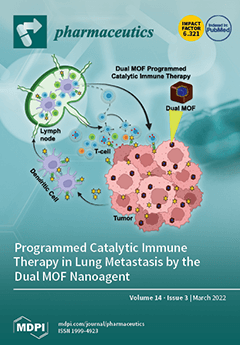Oral medication with activity specifically at the inflamed sites throughout the gastrointestinal tract and limited systemic exposure would be a major advance in our therapeutic approach to inflammatory bowel disease (IBD). For this purpose, we have designed a prodrug by linking active drug moiety to phospholipid (PL), the substrate of phospholipase A
2 (PLA
2). PLA
2 expression and activity is significantly elevated in the inflamed intestinal tissues of IBD patients. Since PLA
2 enzyme specifically hydrolyses the
sn-2 bond within PLs, in our PL-based prodrug approach, the
sn-2 positioned FA is replaced with cyclosporine, so that PLA
2 may be exploited as the prodrug-activating enzyme, releasing the free drug from the PL-complex. Owing to the enzyme overexpression, this may effectively target free cyclosporine to the sites of inflammation. Four PL-cyclosporine prodrugs were synthesized, differing by their linker length between the PL and the drug moiety. To study the prodrug activation, a novel enzymatically enriched model was developed, the colonic brush border membrane vesicles (cBBMVs); in this model, tissue vesicles were produced from colitis-induced (vs. healthy) rat colons. PLA
2 overexpression (3.4-fold) was demonstrated in diseased vs. healthy cBBMVs. Indeed, while healthy cBBMVs induced only marginal activation, substantial prodrug activation was evident by colitis-derived cBBMVs. Together with the PLA
2 overexpression, these data validate our drug targeting strategy. In the diseased cBBMVs, quick and complete activation of the entire dose was obtained for the 12-carbon linker prodrug, while slow and marginal activation was obtained for the 6/8-carbon linkers. The potential to target the actual sites of inflammation and treat any localizations throughout the GIT, together with the extended therapeutic index, makes this orally delivered prodrug approach an exciting new therapeutic strategy for IBD treatment.
Full article






